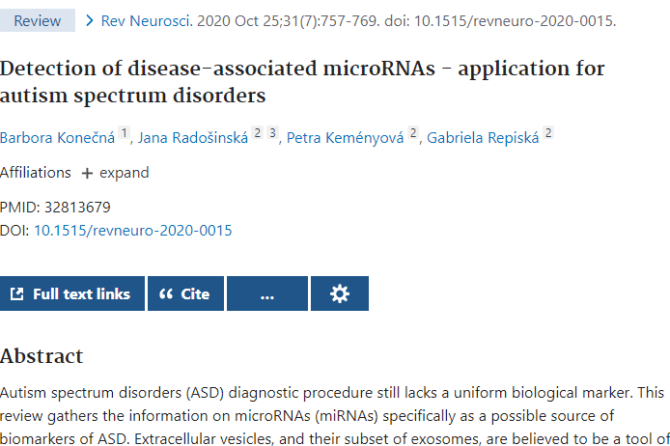
AUTHORS: Konečná, B., Radošinská, J., Keményová, P. and Repiská, G.
ABSTRACT: Autism spectrum disorders (ASD) diagnostic procedure still lacks a uniform biological marker. This review gathers the information on microRNAs (miRNAs) specifically as a possible source of biomarkers of ASD. Extracellular vesicles, and their subset of exosomes, are believed to be a tool of cell-to-cell communication, and they are increasingly considered to be carriers of such a marker. The interest in studying miRNAs in extracellular vesicles grows in all fields of study and therefore should not be omitted in the field of neurodevelopmental disorders. The summary of miRNAs associated with brain cells and ASD either studied directly in the tissue or biofluids are gathered in this review. The heterogeneity in findings from different studies points out the fact that unified methods should be established, beginning with the determination of the accurate patient and control groups, through to sample collection, processing, and storage conditions. This review, based on the available literature, proposes the standardized approach to obtain the results that would not be affected by technical factors. Nowadays, the method of high-throughput sequencing seems to be the most optimal to analyze miRNAs. This should be followed by the uniformed bioinformatics procedure to avoid misvalidation. At the end, the proper validation of the obtained results is needed. With such an approach as is described in this review, it would be possible to obtain a reliable biomarker that would characterize the presence of ASD.
Rev Neurosci. 2020 Oct 25;31(7):757-769.


